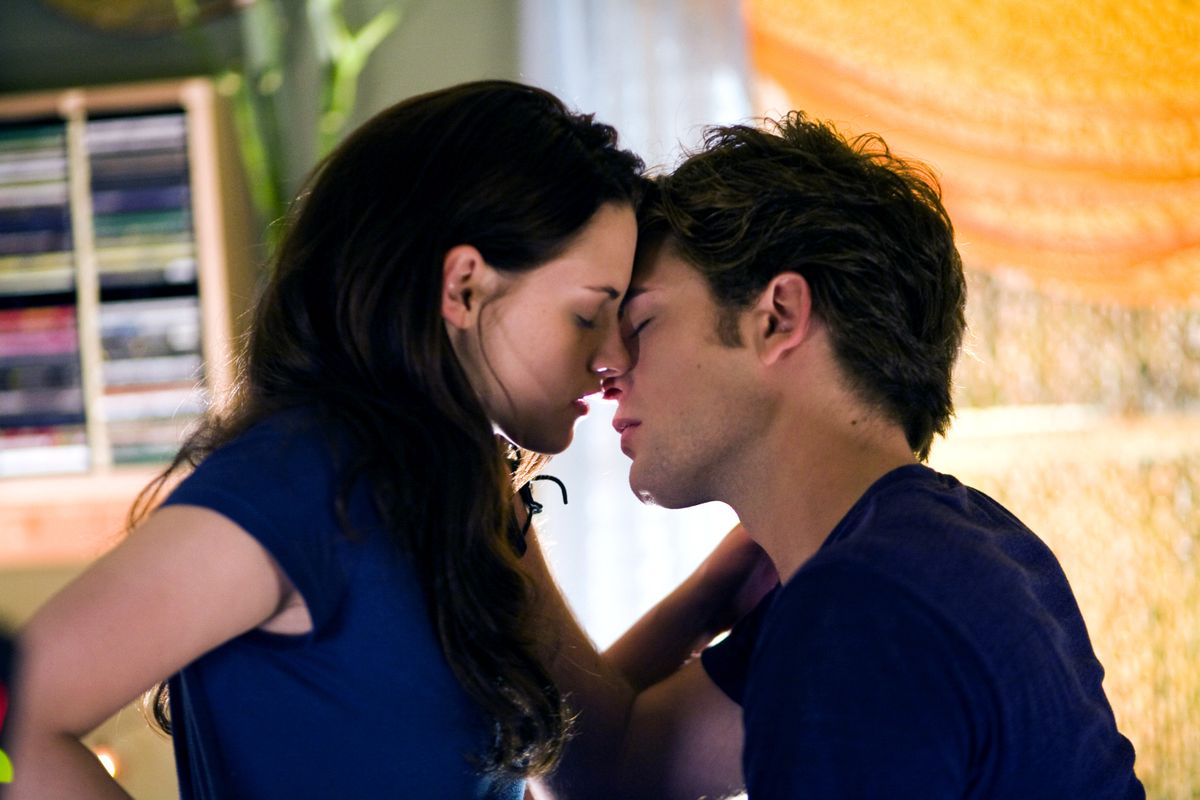Vampire strikes back
Damsels-in-distress beware: New film, ‘Twilight,’ HBO’s ‘True Blood’ put victims back in the spotlight

Nobody wants to be a victim. But boy, do we like watching them, reading about them, putting ourselves (temporarily) in their headspace. And nowhere is that more true than in a couple of current, high-profile vampire projects – projects that turn the traditional idea of victims on its head.
In “Twilight,” the highly anticipated new movie based on Stephenie Meyer’s popular novels about a teen girl’s relationship with a vampire (and a werewolf), the “victim” is crucial to the story, to the extent that it’s told from her perspective.
The same is true for “True Blood,” HBO’s drama in which vampires are “out” in the world. The first-season finale airs tonight, and it just got picked up for a second season.
But Bella Swan and Sookie Stackhouse aren’t mere blood supplies for the vampires in the tales. To call them victims may even be misleading; they are equal partners, at least, young women who turn what could have been damsel-in-distress characters into empowered survivors.
Other films use a similar point of view; “Rosemary’s Baby” comes to mind, as well as any number of slasher films in which a young woman tries to outmaneuver a mindless killer.
But Bella and Sookie are much more proactive, more in control of their destinies (and, in the case of the former, much smarter), even as they flirt – literally – with danger.
It’s not a new concept. Telling the vampire story from the victim’s point of view dates to Bram Stoker’s “Dracula,” published in 1897, and beyond, although perhaps not to the current extent.
In many cases, telling the story through the “victim’s” eyes is simply more interesting.
“Bella asks Edward (Cullen, a vampire) about his life and his history,” says “Twilight” director Catherine Hardwicke. “There are very few questions he asks her, because we know more about ordinary life. We’re fascinated by extraordinary lives.”
Vampires’ lives, if you can call them that, certainly qualify as extraordinary.
Do ours? Our lives are perhaps ordinary, but our times are not.
Thomas Garza, the director for Russian, East European and Eurasian Studies at the University of Texas, notes that extraordinary times often spawn extraordinary creatures in works of art. With worries about war, the economy and more, it’s no wonder we identify with victims.
“The perspective of the victim is going to be very popular with an audience that feels victimized and simultaneously wants to be reassured that all will be fine,” he says. “We’re very interested in the ‘monsters,’ as long as we can also be assured that we have defenses or immunities against them, or, simply, that we will emerge victorious.”
Audiences “want to feel that, one, they weren’t alone in their fear, and two, that their own lot might not be as bad as that of the narrator,” Garza says.
Even in “Dracula,” the victims are front and center; the novel is told through letters, journal entries and newspaper accounts.
Much of it is written by those directly affected by the vampire. Included among them is Mina, whose fiance, Jonathan Harker, is trapped by Dracula at the beginning of the book. Eventually Dracula bites her and feeds her his own blood, unintentionally turning her into a sort of transistor radio, enabling vampire hunters to keep up with the vampire’s whereabouts.
“Her experience of being one of Dracula’s victims, and how it affects the others, is what drives the story,” says Amy Kind, an associate professor of philosophy at Claremont McKenna College in Claremont, Calif.
“So I think, even from the beginning of the vampire genre, the victim was a crucial part of the story.”
Bella and Sookie don’t need the help of others to save them. Unlike those around them, they seek relationships with vampires, attempt to understand them (and more).
While the vampire holds the ultimate hole card – he can always kill with ease – these women stare down what others see as dangerous monsters face-to-face.
They are thoroughly modern women; if they are to be bitten, for instance, it will be on their own terms, not a vampire’s.
That strength gives “True Blood” and “Twilight” – as well as such earlier works as “Buffy the Vampire Slayer,” which took the victim-as-fighter to the extreme by giving her supernatural powers – a contemporary twist.
Hardwicke notes that the books on which the TV show and movie are based were written by women – “True Blood” by Charlaine Harris. and “Twilight” by Meyer – and surmises that this might have something to do with it.
It may be reading too much into it to think of this more of a socioligical trend than an entertainment one. Then again, maybe not. We find a lot of clues to people’s behavior in popular culture and its fans.
“There are a lot of teenage girls walking around wearing T-shirts that say, ‘Bite me, Edward,’ ” Hardwicke says. “There’s still hope that it might happen.”